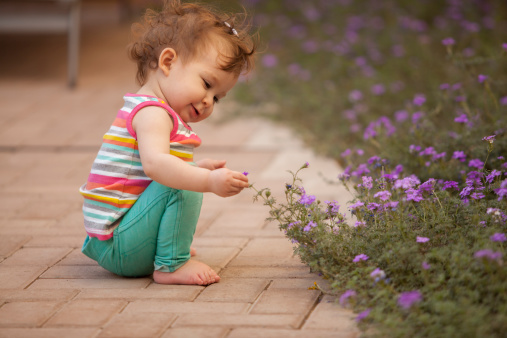Kids are often awed by the majesty of a sunflower they grew from a tiny seed – and when you stop to think about it, it is pretty mind-blowing!
Here are our top tips for making the most of gardening with your children
1. Grow Self-Sufficiency Provide your kids with their own little patch of garden. If they’re really tiny they might just want to dig in the soil, pour on water and get muddy! But whatever it is they want to do, encourage them by offering an area that is theirs alone. They can choose what to grow and where.
2. Encourage Maths and Measurement Grow sunflowers. These can be grown really easily in pots of soil from a single seed and the results are magnificent. There’s nothing that promises summer quite like the smiling face of a sunflower. Keeping a growth chart is a great way to introduce a mathemathical element to gardening! When the flowers are finished, gather the seeds to eat or grow more next year.
3. Build Planning Skills Plan your garden together. There are lots of apps available now for kids who are technological whizzes, or you might like to sketch it out on graph paper and plan your plots that way. One fun thing to do is to write down the ingredients for your favourite meal and see if you can grow as much as possible on the menu!
4. Get Into Science Experiment together. Plant a tray of seeds and, when they’ve grown a little, plant out the seedlings in different areas of the garden to see how they fare. Some prefer sunny conditions while some are better in the shade, plus soil condition also impacts on what grows best where. Great way to learn about different plants and their needs!
5. Use The Garden Creatively Keep a garden diary. This might take the form of a photo every few days of your sunflower seedlings, for instance, or a more detailed account of what’s planted where and how they’re getting on. A photo account is really something when the squash plants are sprawling across the garden: the Before (child with seed in palm of hand) and After (child beside huge sunflower or squash plant, for instance) photos will be a source of amusement and wonder.
For a fun website, with tips and a blog on gardening with children, see http://www.gardeningwithchildren.co.uk/







